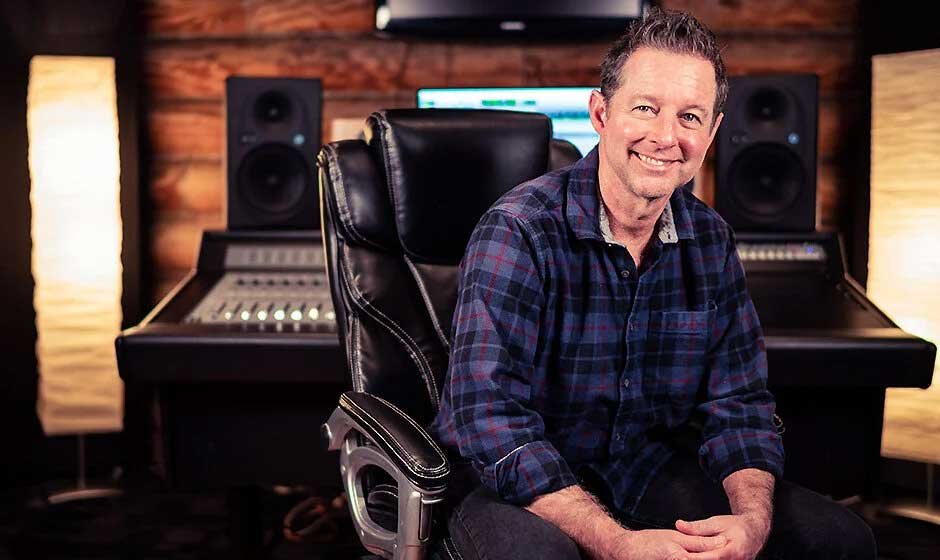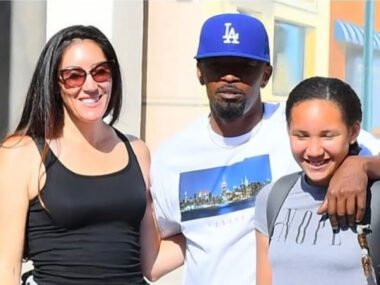Introduction – The Art of Sound Storytelling
Behind every great film, there’s an invisible artist crafting the sonic world that draws you in. Will Henley is one of these creative professionals, working tirelessly to shape the audio landscapes that make stories unforgettable. This talented sound editor and re-recording mixer has built his reputation on creating immersive experiences across film, television, gaming, and music projects.
Think about your favorite movie scene. The dialogue, the background music, even the subtle sound of footsteps on gravel – all these elements work together to create emotion and atmosphere. Henley gets this. He approaches every project knowing that great sound design can make or break a story’s impact on its audience.
From mixing live bands to winning prestigious awards, Henley’s career tells the story of someone who turned passion into expertise. His journey reflects how the audio industry itself has evolved, embracing new technologies while never losing sight of the fundamental goal: bringing stories to life through sound.
Early Career and Musical Foundations
Like many audio professionals, Will Henley didn’t start out planning to work in film sound. His entry point was live music, where he learned the ropes mixing sound for local bands. Those early gigs taught him something crucial – when you’re working with live audiences, there’s no room for error. You learn fast, or you fail fast.
Working with bands gave Henley hands-on experience with real-time audio challenges. Every venue was different, every performance brought new problems to solve. This environment shaped his ability to think quickly and adapt on the fly – skills that would prove invaluable later in his career.
The transition from live mixing to studio work opened up new creative territories. Suddenly, Henley could take his time, experiment with different approaches, and perfect every detail. He discovered he had a knack for the patient, methodical work of crafting soundscapes where every element serves the bigger picture.
Those foundational years mixing live music gave him something textbooks can’t teach: an intuitive understanding of how sound affects people. Whether he’s working on an intimate drama or an action-packed thriller today, that early experience continues to inform his approach.
Educational Journey and Skill Development
Realizing he needed formal training to match his growing ambitions, Henley mapped out an educational path that would take him from enthusiastic amateur to industry professional. Each step built on the last, creating a comprehensive foundation for his future career.
Technical Education at Confetti Institute
Henley’s formal education kicked off at Confetti Institute with a BTEC in Music Technologies. This wasn’t just theory – the program emphasized getting your hands dirty with real equipment and software. Students worked with the same tools they’d encounter in professional studios, making the transition to industry work much smoother.
The practical focus at Confetti suited Henley perfectly. He could experiment with different recording techniques while building up his technical knowledge. This period was all about understanding the tools of the trade and developing the technical skills that would support his creative vision.
Advanced Studies at Oxford SAE
Next came Oxford SAE, where Henley earned his BSc in Audio Production. This degree took him deeper into the science behind sound – acoustics, psychoacoustics, and the complex technical processes that turn raw audio into polished productions.
The program challenged him to think critically about every aspect of audio work. It wasn’t enough to know which button to press; he needed to understand why certain techniques work and how to adapt them for different projects. This analytical approach would later help him tackle the complex demands of film and television sound design.
Specialization at the National Film and Television School
Choosing to specialize at the National Film and Television School (NFTS) was a game-changer for Henley’s career. NFTS has a reputation for excellence that opens doors throughout the industry, but more importantly, it gave him the chance to focus specifically on sound design as an art form.
The diversity of projects at NFTS was incredible. One week Henley might be working on a gritty urban drama, the next on a nature documentary or an animated short. This variety taught him to adapt his approach to different storytelling styles and audience expectations.
Collaboration was a huge part of the NFTS experience. Working closely with directors, writers, and other creative professionals, Henley learned that sound design isn’t just a technical job – it’s an integral part of the storytelling process. The best sound designers don’t just follow instructions; they contribute creative ideas that enhance the overall narrative.
At NFTS, Henley took on leadership roles as both sound editor and sound supervisor. These positions required him to manage teams and guide the creative direction of entire audio departments. The experience prepared him for the collaborative, leadership-focused nature of professional film work.
Professional Achievements and Recognition
Henley’s student work started getting serious attention from industry professionals, signaling that he was ready to make his mark in the competitive world of audio post-production.
Award-Winning Work
“Photograph 1” stands out as Henley’s breakthrough project. This film showcased his ability to create audio that doesn’t just support the visuals but actively enhances the storytelling. The project’s success in multiple competitions proved that his approach was resonating with both audiences and industry professionals.
Getting selected as a semifinalist for the Student Academy Awards was huge. This competition attracts the best student work from around the globe, so making it to the semifinals put Henley’s work in elite company. It was validation that his sound design could compete at the highest levels.
The British Short Film Awards jury prize added another layer of recognition. This award came from industry professionals who understood the technical and creative challenges of sound design. For Henley, it confirmed that his work was meeting professional standards and making a real impact on the films he worked on.
Industry Recognition
These awards did more than look good on a resume – they established Henley’s reputation as someone who could deliver exceptional work under pressure. Industry professionals started taking notice of his unique approach to sound design and his ability to elevate projects through carefully crafted audio.
The success of “Photograph 1” opened doors that might have taken years to unlock otherwise. Suddenly, Henley had credibility in an industry where reputation is everything. People knew his name, and more importantly, they knew the quality of work associated with it.
Current Work and Expertise
These days, Will Henley works as a freelance sound editor and re-recording mixer from his base in southern England. This setup gives him the flexibility to choose projects that excite him while building relationships with creative teams across the industry.
His expertise covers the full range of audio post-production work. As a sound editor, he shapes the individual components of a film’s audio – cleaning up dialogue, selecting the perfect sound effects, and creating the detailed soundscape that supports the story. When he’s re-recording mixing, he’s balancing all these elements into a final mix that serves the emotional needs of each scene.
What sets Henley apart is his focus on immersive sound design. He doesn’t just want audiences to hear his work; he wants them to feel transported into the world of the film. This requires a deep understanding of both the technical possibilities of modern audio equipment and the psychological impact of different sounds on listeners.
His client base includes both short film projects and feature-length productions. This variety keeps his work interesting while demonstrating his ability to scale his approach to different budgets and production timelines. Whether he’s working on a micro-budget indie film or a larger commercial project, the attention to detail remains the same.
Henley sees every project as a chance to contribute something meaningful to the storytelling process. He’s not just providing a technical service; he’s collaborating with directors and producers to create audio that enhances the emotional impact of their work.
The Future of Sound Design
The audio industry is changing rapidly, driven by new technologies and evolving audience expectations. Professionals like Will Henley find themselves at the center of this transformation, helping to define what’s possible in modern sound design.
Henley’s commitment to staying current with emerging technologies positions him well for future opportunities. He understands that the tools will continue to evolve, but the fundamental goal remains the same: creating audio that serves the story and connects with audiences on an emotional level.
Audiences today are more sophisticated about audio quality than ever before. They notice when sound design is exceptional, and they definitely notice when it’s not. This creates both challenges and opportunities for professionals who can consistently deliver high-quality work.
The rise of new distribution platforms – from streaming services to virtual reality experiences – is creating demand for innovative approaches to audio design. Henley’s willingness to experiment with new techniques and technologies suggests he’ll continue to find opportunities in this evolving landscape.
Looking ahead, his focus on continuous learning and adaptation should serve him well. The industry rewards professionals who can evolve with changing technologies while maintaining the creative vision and technical excellence that audiences expect.
Conclusion – Bringing Stories to Life Through Sound
Will Henley’s career path from live music mixing to award-winning sound design illustrates how passion, education, and persistence can build a successful career in audio post-production. His story shows that success in this field requires both technical mastery and creative vision.
The recognition he’s received for projects like “Photograph 1” demonstrates the real impact that skilled sound professionals have on the entertainment we consume. Great sound design doesn’t just support a story – it elevates it, creating emotional connections that linger long after the credits roll.
For anyone considering a career in audio engineering or sound design, Henley’s journey offers a roadmap. Comprehensive education, diverse experience, and a commitment to continuous improvement are essential ingredients for success in this competitive field.
As the entertainment industry continues to evolve, professionals like Will Henley will play increasingly important roles in shaping how stories are told through sound. His dedication to innovation and excellence ensures that his work will continue to inspire both audiences and fellow professionals.
Sound design remains one of the most powerful yet underappreciated elements of modern entertainment. Through his continued commitment to bringing stories to life through audio, Henley helps ensure that this crucial aspect of filmmaking gets the recognition it deserves.










